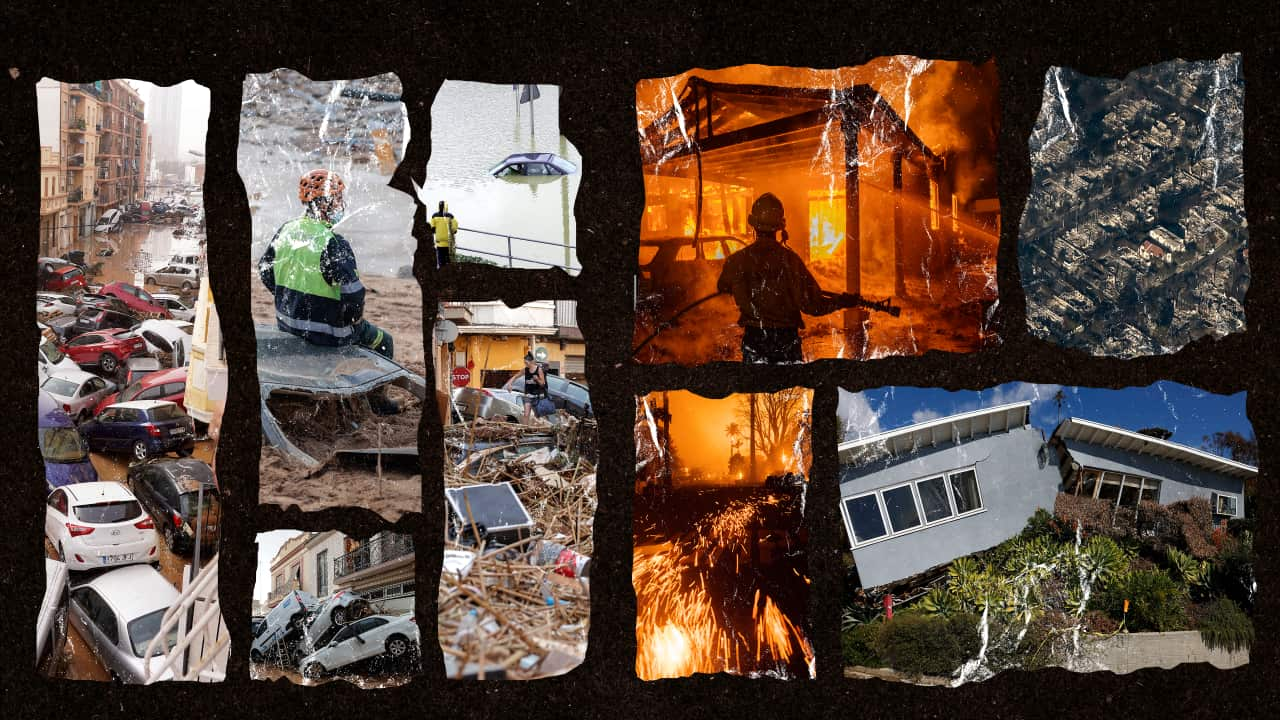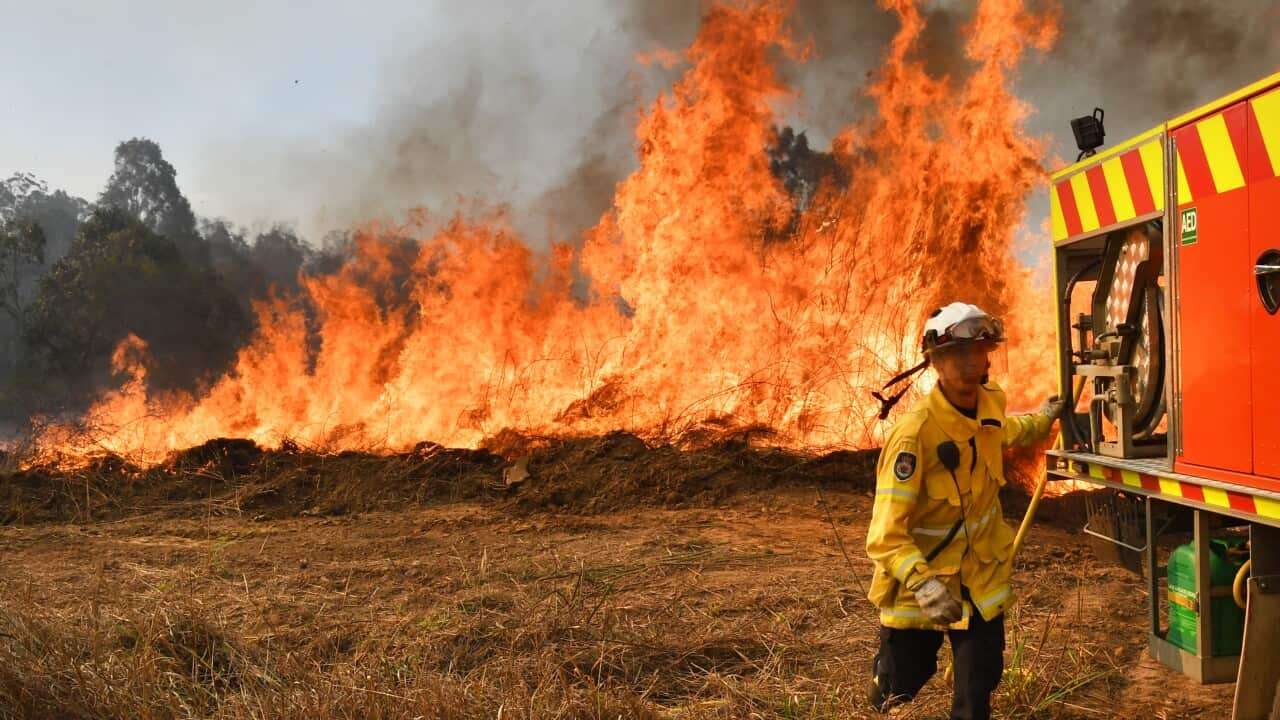David Karoly remembers regularly seeing frost when he was a young boy on his way to school in Melbourne — now it's become an unusual sight for the city.
The decline in frosty days is one of many weather-related changes that people around the world are noticing and describing as "weird".
Climate change has already driven global temperatures up by an average of 1.55C compared to pre-industrial levels, and.
Individual "global weirding" events may or may not be linked to climate change but Karoly, who is an internationally recognised expert on climate change, says they are happening more often.
"We are experiencing more weird events," says the University of Melbourne professor emeritus.
"It's partly due to what's called '' where we're getting rapid switches between wet events [years when there's more rainfall] to dry events and hot years."
Karoly says this is exactly what happened prior to the, which had experienced several years of wet conditions that boosted the amount of vegetation before conditions switched to being dry and hot.

Deadly bushfires in Australia in 2020 turned the sky red in parts of NSW and Victoria including East Gippsland. Source: Getty / Darrian Traynor
What is 'global weirding'?
Unusual weather-related events observed at a local level have been described as 'global weirding' by some in the climate science community.
Karoly says global weirding is not a term he uses often, but it could include phenomena such as plants flowering at unusual times of the year.
The LA bushfires could also be described as global weirding because they took place in winter. Similarly, the have also been attributed to climate change.
But such unusual weather events can form part of the climate's natural variability and there will always be extreme events.
Karoly says it's not easy for people to know from personal experience whether an event is unusual. People's lifetimes are short, and relying on individual perceptions and memories can be complicated.
For example, anecdotal evidence may not be reliable when trying to understand whether a 1-in-100-year flood is unusual.
It's even more difficult to know whether it is linked to climate change in some way.

More than 200 people died during floods in Spain in 2024. Source: AAP / Alberto Saiz/AP
Are these events actually weird?
Global climate change impacts — such as temperature and sea level rise — have been fairly accurately predicted in reports from organisations such as the Intergovernmental Panel on Climate Change, but the changes these bring to conditions in local areas are relatively unpredictable.
The lack of historical climate records in some areas may also make it difficult to assess patterns, as these sometimes only span a few decades, and are too sparse to capture local conditions.
CSIRO coastal oceanographer Ron Hoeke says it takes a lot of research to pin down the cause of a particular event, and usually, it's neither 100 per cent due to climate change, nor 100 per cent due to natural climate variability.
"It's some mix of the two, generally — because we've got this underpinning variability and almost pseudo-randomness in the natural Earth system," he says.
This randomness for example, could see a storm surge happen at low tide or high tide.
But Hoeke says climate change has been found to be an increasingly large factor in more recent extreme weather events.
In order to better understand whether a weather-related event is unusual, Hoeke says it's important to support the Bureau of Meteorology (BoM) and other organisations to maintain and expand the number of earth observation networks such as weather stations, tide gauges and satellites.
"That's how we're really going to fundamentally improve our understanding of climate impacts at a local scale," he says.
Improving predictive models used in local areas will also be important.
Karoly says looking at many different types of information, including oral histories of Indigenous communities, may also be helpful when assessing whether certain events are weird.
He says Indigenous Australians — who have lived in Australia for more than 65,000 years — could speak to conditions dating back to the last Ice Age when around 8 per cent of the Earth's surface was covered in ice and it was possible to walk from Melbourne to Tasmania.
Since temperatures began to warm more than 10,000 years ago, these communities have witnessed more than 100 metres of sea level rise.
"If we want to look at real unusual, weird events we need to use all the possible sources of data and evidence," Karoly says.
Our 'normal' is changing
Karoly says climate change is making many extreme events worse. "The hot events are getting hotter, the [short-term] wet events are getting wetter.
[Our] normal is changing and we can't use [our] experience of 50 years ago, or even 30 years ago, to say what is weird or normal.
The BoM's released in November says Australia's climate has warmed by an average of 1.5C since national records began in 1910.
Heavy short-term rainfall events are becoming more intense, and sea levels are rising around Australia.
There has been an increase in extreme fire weather and longer fire seasons have been observed across large parts of the country since the 1950s.
The number of snow days has also decreased in alpine regions since the late 1950s.
More recently, Australia has experienced a rare "triple-dip" La Niña, with the weather pattern bringing increased rain and cooler-than-normal conditions in 2020, 2021 and 2022.

The NSW town of Lismore experienced two floods in 2022 during La Niña conditions in Australia. Source: AAP / Jason O'Brien
"People should be aware of and careful about whether the flood boundaries that are used where they live need to be updated — or have been updated if they're thinking about buying a new house," Karoly says.
He also points out that not every weird event will be seen as negative: Some people may prefer the lack of frost in Melbourne, although those who enjoy winter sports such as skiing may not be so happy.
"Cold extremes are getting less weird — snowfall or cold temperatures [are getting less common].
"We can't use what used to be the norm as evidence for what is the current norm, because it's already changed because of human-caused climate change."




